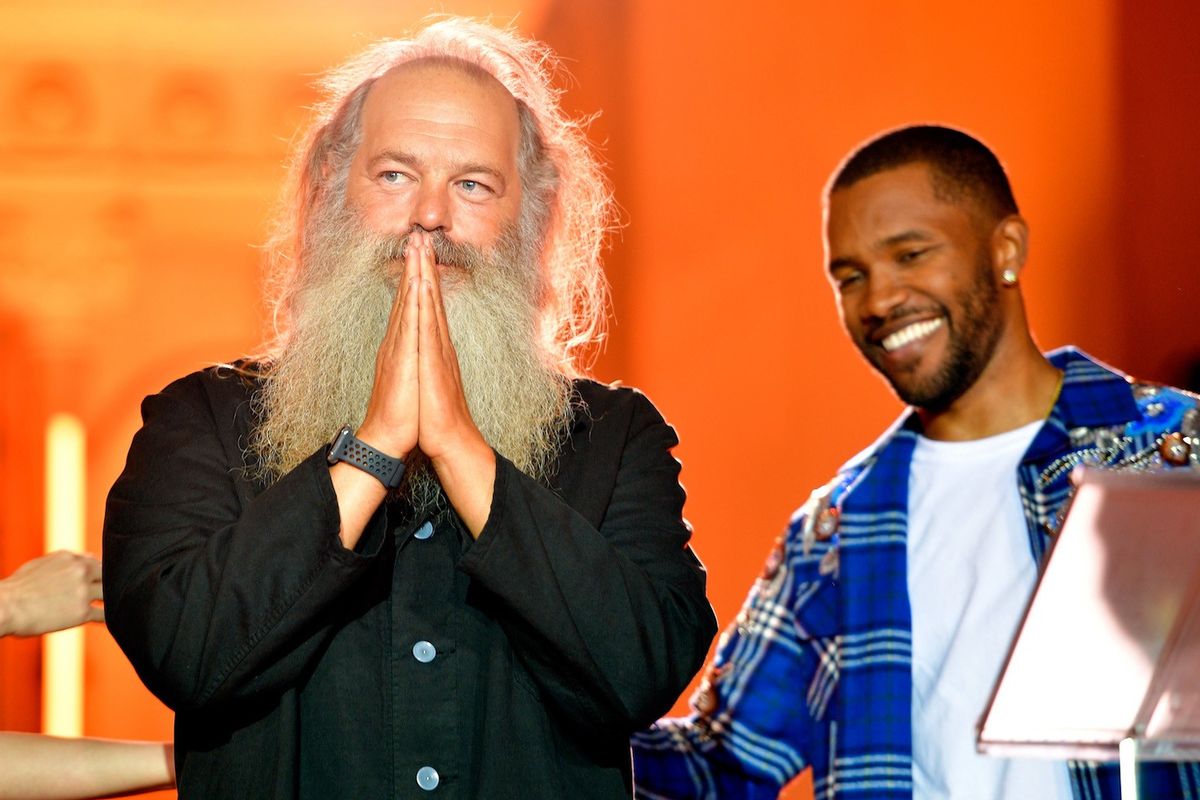
The Rick Rubin book, The Creative Act: A Way of Being, is out now.
Photo by Matt Winkelmeyer for Spotify via Getty Images.

If you knew nothing of what a Rick Rubin book was intended to be, a reasonable and not at all assumptive leap would carry you almost directly to memoir or studio journal territory. And no one could blame you for it — the rise of rap’s famed "reducer" is an epic on par with the Greek Classics.
A straight-edge punk co-founds an enduring, disruptive, and iconic institution, firmly launching hip-hop’s first commercially viable era from his NYU dorm room with a roster of revered rappers in tow. Reinventing as many careers as he'd established, Rubin quickly became one of music's most decorated and mythologized figures in the following decades. From LL Cool J to Slayer, JAY-Z to Johnny Cash, Adele, Beastie Boys, and Kanye West, there is virtually no gap in genre or era over the last 30 years untouched by Rubin's reductions. But those are not the scrolls the producer chose to unbound in his debut as an author.
The Rick Rubin book we got is entirely devoid of the tasty session secrets many hoped to uncover in its pages. Instead, The Creative Act: A Way of Being is something of a personal manifesto on the value of art and the nature of creativity, treating the process of making literally anything as sacred work. Across the book's nearly 80 chapters, Rubin meanders along the edges of ideas that, if fully articulated, could prove to be impactful to someone struggling with the development of an efficient and productive workflow in or outside of a creative field.
Sadly, Rubin's musings rarely leave the ethereal plain he's placed all of human creativity on. Any tangible guidance gets muddied in metaphysical framings of complex relationships between awareness, patience, context, identity, originality, and, of course, the cosmos. "An artist casts a line to the universe" is something he actually writes. The respective sections on collaboration, temporary rules, and experimentation prove particularly confounding and brimming with contradictions. And there are few indications as to how Rubin himself has tested his theories in all his years of hit-making and artist-whispering, or what worked for which type of creative and whether it reared the desired results.
The Creative Act and the legion of Rubinites no doubt rifling through its 400-plus pages of floaty philosophizing would benefit greatly from a more grounded presentation of the producer's artistic principles. Some of the most concrete (and genuinely useful) elements arrive about midway through the book in a stretch of chapters on crafting, momentum, breaking the sameness, and completeness. Artists who find themselves categorically stuck in a creative block or derailed by a cognitive obstruction might implement a handful of practicable alterations to their personal workflows gleaned from those pages. They may realize the importance of the respective settings of where their work is done and where it is interpreted. They may decide to tweak a random aspect of the piece to evaluate the strength of its surrounding elements. They may even introduce an arbitrary rule at the onset of their creative pursuit just to see what they can build around it.
But even here, in the most legible run of Rubin's exhausting rumination, it's unclear who or what the producer is writing for. Blue-collar makers tempted by The Creative Act won't find much in the way of actionable coaching or solutions to common hold-ups. And the religiosity of Rubin's rhetoric buries the intent of his debut under mountains of mysticism, rendering his own wisdom virtually inaccessible to those who don't speak Rubin, and have no idea how to "make the ecstatic your compass."
Working-class creatives aren't typically held up by the limits of their imagination. External factors — resources, upbringing, and the environment in which their work takes place — are far more frequent obstacles to maintaining a verdant and perpetually productive creative state. And Rubin, out of either unintentional neglect or deliberate omission, has little to offer in resolving the uncontrollable outside of suggesting a meditation regiment and fine-tuning one's reception of the infinite.
Without citable case studies, demonstrated technical skills, or any specific examples of how his approaches have produced the outcomes he'd sought out, The Creative Act can only be read as one very privileged and overly-financed man's attempt at plastering a personal spiritual practice onto the art of others. And even if it brings you slightly closer to understanding the mythological minimalism of music's most renowned fly on the wall, it's hard to tell how seriously you should take it.